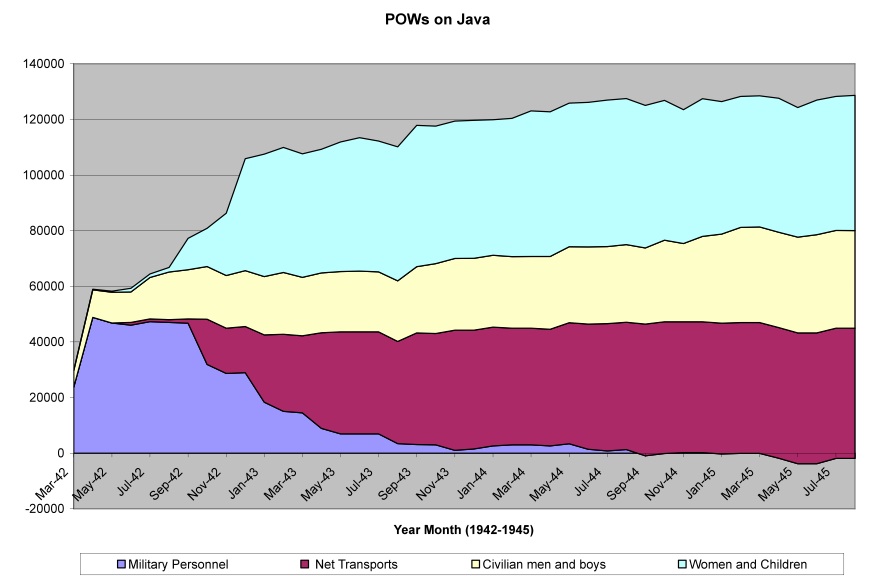Internment Camps on Java
Internment Camps for Europeans on Java during the Pacific War (1941-1945)
What follows is a short description of some of the statistical data I collected and refer to in my book, Tjideng Reunion.
Japan justified its major offensive of Dec 1941 in part on a desire to rid Asia of European influence. But an equally strong policy objective was achievement of economic hegemony, most importantly by securing control over the petroleum resources of Indonesia. In Java these two policy objectives clashed, because the economy of Indonesia had been managed by the European and Europeanised sector of the population (Eurasians or Belanda Indo people).
The book, Tjideng Reunion, discusses how these policy clashes manifested itself with resultant misery for all inhabitants of Java The process of selective incarceration over time of Europeans is presented in the following graph.
This graph provides an overview of the Japanese internment history on Java. The source of the data presented is the Geillustreerde Atlas van de Japanse Kampen in Nederlands Indie 1942-1945,(J van Dulm, W.J. Krijgsveld, H.J. Legemaate, H.A.M. Liesker G Weijers, Asia Maior, 2000).
The decreasing numbers of interned military personnel over time evident from the above graph, reflected the Japanese High Command policy of using these manpower resources as slave labour elsewhere in the occupied territories and within Japan itself. The field labeled net transport is an aggregation of the data that has been assembled of military personnel (mainly) being shipped out of Java. The other fields attempt to aggregate the remaining interned population.
Internment was almost exclusively based on ethnic considerations, although in Bandoeng a number of civilians of mixed race were also imprisoned. The author is unaware of accurate records covering the entire war time period. What is presented in the Atlas is clearly an attempt at reconstruction from fragmentary information. For the Indonesian part of the population almost no data related to internment or slave labour is available at all.
The casualty rate associated with the internment process and the slave labour aspect is poorly defined. The Junyo Maru incident described in the book Tjideng Reunion is merely one such disaster.

Leave a Reply